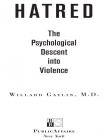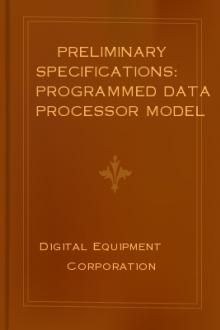Hatred, Willard Gaylin [best ebook for manga txt] 📗

- Author: Willard Gaylin
Book online «Hatred, Willard Gaylin [best ebook for manga txt] 📗». Author Willard Gaylin
Even open societies have had difficulty accommodating to the fact that genetics plays a part in human development and variability. The tragic and distorted use of genetic theory by the Nazis caused liberal communities to reject the possibility of genetic differences in human potential. Humanistic democracies want to believe that any child can grow up to be a Beethoven or a Newton. The rapid evolution of the understanding of genetics in the past fifty years, however, has forced an awareness of the importance of genetics in determining at least some aspects of human conduct and character. Still, in the area that concerns us—not extraordinary talent or genius, but mere fulfilling of natural human patterns—the weight of the evidence clearly attests to environmental factors in human development. As such, the moral character of the child is hostage to the quality of parenting and the values of the culture.
Although the need for some community is a fixed part of our biology—we are obligate social animals—the quality and characteristics of these communities are not dictated by nature, as is the case with animals. Given human flexibility and autonomy, the kind of social environments we create can vary dramatically. As a result we have developed such paranoid cultures as the Yanomamo Indians of southern Venezuela,50 the Albanians under the Communists, and the shrouded enigma that is North Korea.
In our concern for individual hatred and cultures that encourage hatred, we must address human development at least minimally. Since hatred—beyond being an emotion and a thinking disorder—is a pathological attachment of one person to another, we must examine the nature of attachments. We must follow the trail from the first identification of a self; distinguishing ourselves from others; attaching ourselves to others; and, finally, identifying with those to whom we are attached. In this process we find allies, build communities, and ultimately locate enemies.
Identity: The Self
How do we first discover our “self”? Before even differentiating the me from the you, how do we distinguish the me from the inanimate things around us, the blanket or the diaper? No one can peer inside the mind of the neonate and precisely determine what thoughts exist there. Nonetheless, we have learned to communicate quite well with infants. Researchers have found ingenious ways to determine the likes of a newborn and by inference something about his perceptions. Newborns have variable sucking rates, for example. If we reward fast sucking, the newborn will signal for that reward by sucking fast. In this way we learn what rewards are preferred by the neonate. To our amazement, it turns out that certain newborns will indicate that they prefer light shows, that is, visual stimulation, to sound shows. A minority of neonates prefers the sound shows. And this latter group, when followed into maturity, seems to produce more children with dyslexic problems.
Brilliant new sonar technologies suggest that the late-stage fetus is more aware than we had previously thought. But aware of what? Certainly not of himself versus the surrounding amniotic fluid in which he floats or the placenta to which he is attached. And certainly not to the mother who carries him within her body.
Most theories that have emerged from developmental psychology suggest that the earliest consciousness of the neonate is an awareness of a self and nothing but a self. In other words, the problem is not self-discovery, but world discovery. Many fanciful phrases have been applied to this period, such as the stage of “primary narcissism” and the age of “magical omnipotence.” The reasoning behind these assumptions is based on the knowledge that before the neonate has any true perception, he experiences sensations. Some see the first sensations as occurring around the mouth during the feeding experience that dominates early life. Others place the first sensations as tactile, noticing that with dogs, the process of urination, essential to survival, will not be initiated without perineal licking and stimulation by the mother.
Still others see the first sensation as the proprioceptive senses. These are the awareness of body parts experienced in the stretching and contracting of muscles. We do often sense “ourselves” in adult life through the positions of our body parts in relation to each other. To know where we end certainly means that we know where something else begins.
At any rate, sensations precede emotions, and both precede ideas. We know that a child responds to pinpricks, wetness, and hunger. But what do we mean when we say that the baby is hungry? The “concept” of hunger can’t yet exist. All that he is aware of are the gastrointestinal hunger pains. He screams in a special way different from the distress of sleepiness. Is that rage? It is hard to tell. If it is, a case can be made for a very early consanguinity between deprivation and rage. Most parents, recognizing the cry as a plea for food, supply it and assume the baby is “asking” to be fed. Some parents assume all cries to be requests for food, and we are on our way toward an obese child.
Then what happens? The infant cannot possibly understand the complex chain of events that result from the cry: If the father awakens first, he will more often than not nudge the somnolent mother to prepare the bottle or commence nursing. The infant’s cry should not be perceived as a wake-up call. He cannot possibly be aware of this as a form of communication. This has led





Comments (0)